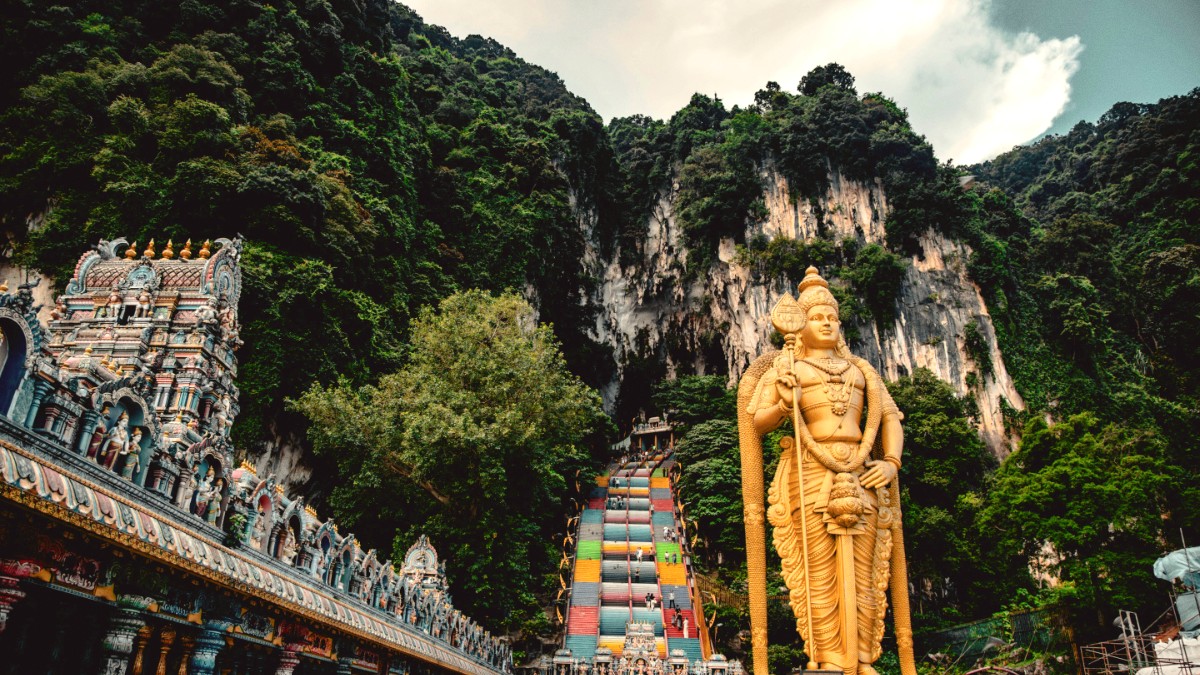
Malaysia
A single day offers a rapid tour of Kuala Lumpur's highlights, with an essential stop at Batu Caves. This itinerary prioritizes efficiency and iconic sights.
Morning (7:00 AM - 11:00 AM): Batu Caves Immersion. Take the KTM Komuter train from KL Sentral to Batu Caves (30-40 min). Arrive early to beat heat and crowds. Climb the 272 steps to Cathedral Cave, explore, and observe monkeys. Allow 1.5-2 hours. Return to KL Sentral.
Tailor your Kuala Lumpur and Batu Caves itinerary to your specific passions.
Explore Kuala Lumpur's colonial past and multicultural roots. Combine with a day trip to historic Malacca for a broader historical experience.
Dive into Malaysia's diverse food scene from street food to fine dining. Learn to cook local dishes and explore different food precincts.
Combine the spiritual climb at Batu Caves with cave exploration, rainforest treks, and urban views from heights.
Fun for all ages with urban parks, animal encounters, and hands-on learning experiences. Batu Caves base areas are great for younger visitors.
Whether you appreciate modern design or seek spiritual calm, Kuala Lumpur and its surroundings cater to focused interests.
Explore modern icons (Petronas Towers, KL Tower), historical buildings (Sultan Abdul Samad Building), and religious structures (Thean Hou Temple, Batu Caves).
Journey from Batu Caves' devotion to multi-faith exploration of temples and mosques. Find inner peace with yoga or nature retreats.
Capture cityscapes, street life, natural landscapes, and the unique cultural scenes at Batu Caves and other sites. Respect privacy.
Malaysia caters to all budgets. These plans show how to manage costs while enjoying your trip to Batu Caves and Kuala Lumpur.
Maximize savings by staying in hostels, eating local street food, and relying on public transport. Focus on free attractions and keep an eye on discounts.
Balance budget with comfort. Stay in good hotels, mix local and casual dining, and use a combination of public transport and ride-sharing for convenience.
Indulge in premium hotels, fine dining, and private transport. Enjoy exclusive tours and high-end shopping, with every paid attraction considered.
Look for hotel promotions or package deals. Travel during shoulder or low season for better rates on flights and accommodation. Combine free attractions with one or two paid experiences. Utilize local public transport during off-peak hours. Eat authentic local food away from highly touristy areas to save money.
Malaysia’s consistent hot and humid climate means no traditional "summer" or "winter." However, distinct dry and wet periods and various festivals offer unique experiences.
The drier period (April-September) has less rainfall, which makes it suitable for outdoor activities and exploring sites like Batu Caves. The wetter period (October-March) experiences more frequent heavy rainfall, offering lush landscapes and potentially fewer crowds.
Thaipusam Festival (late Jan/early Feb) is the most significant event at Batu Caves, drawing immense crowds. Hari Raya Aidilfitri marks the end of Ramadan with "open houses." Ramadan bazaars precede it with special evening food stalls.
Travel during the off-season for fewer crowds at popular attractions like Batu Caves and potentially lower prices on flights and accommodation. This period generally brings more flexibility for booking tours or activities.
If you plan to attend Thaipusam, book accommodation and transport far in advance. Expect immense crowds and road closures near Batu Caves.
During the monsoon, plan more indoor activities or adjust your schedule to avoid peak rain periods.
Carry a good umbrella or rain jacket. Some outdoor activities might face limited access due to heavy rain.